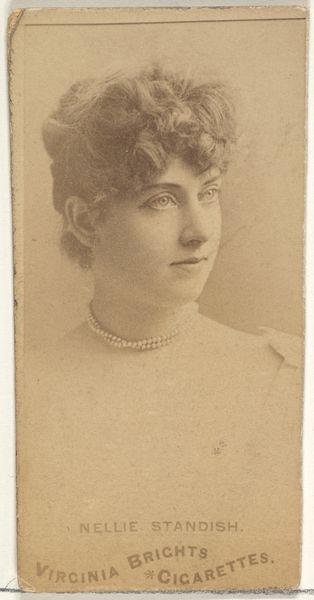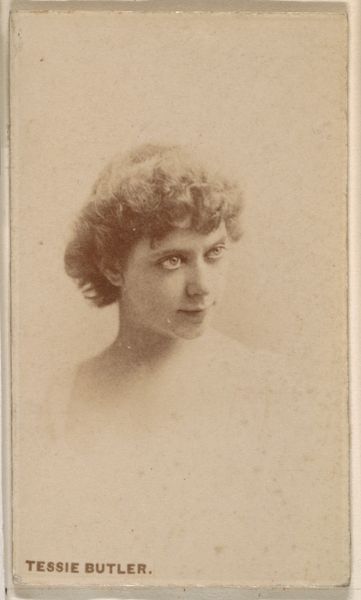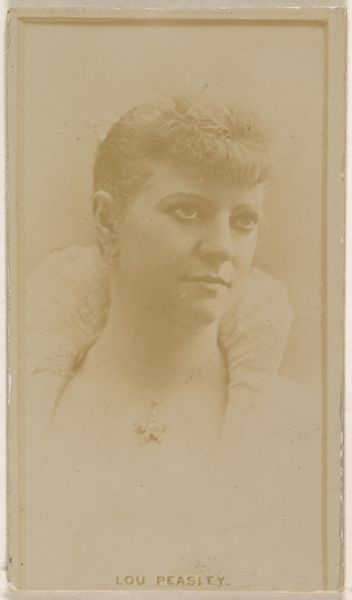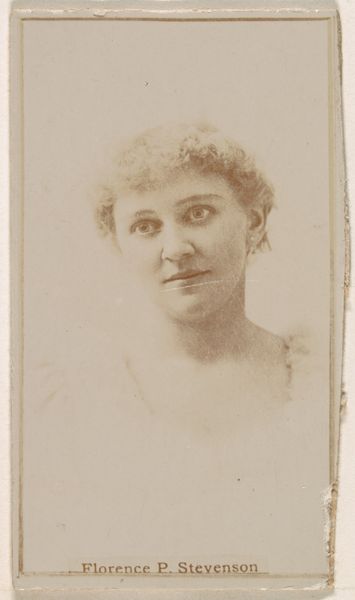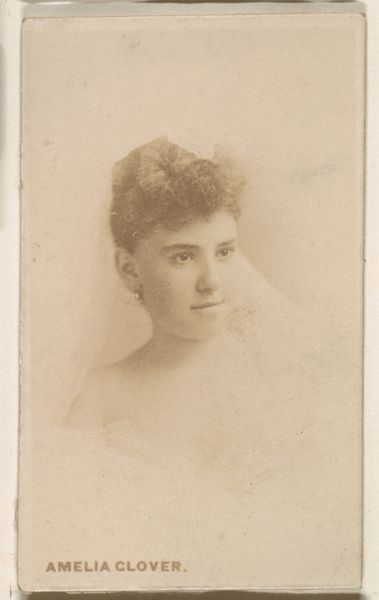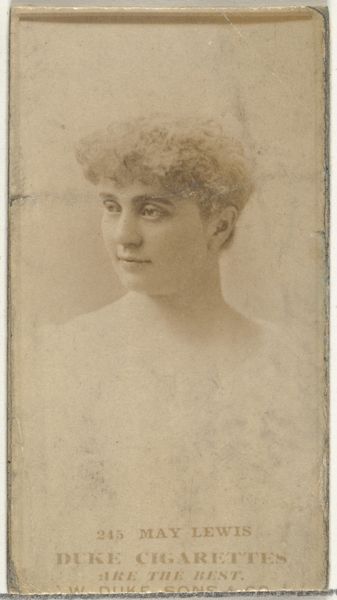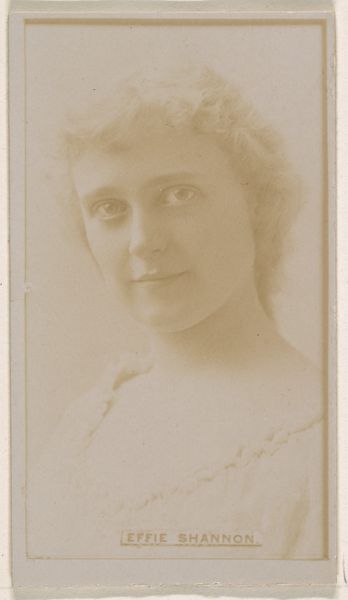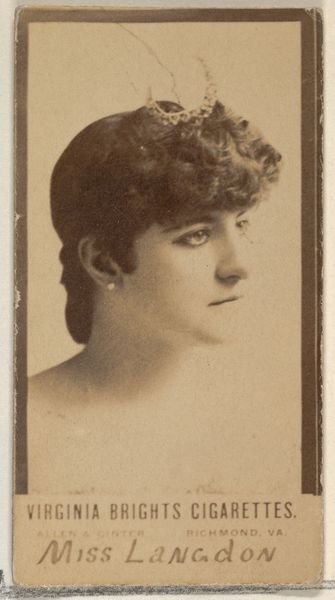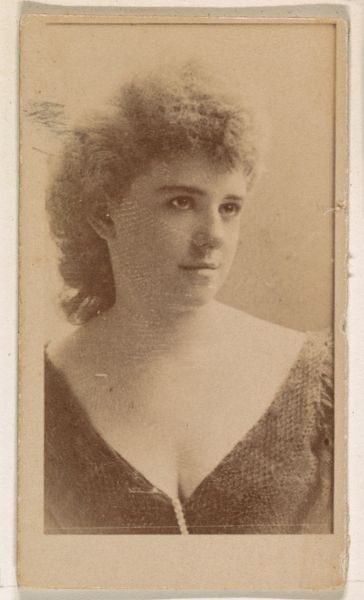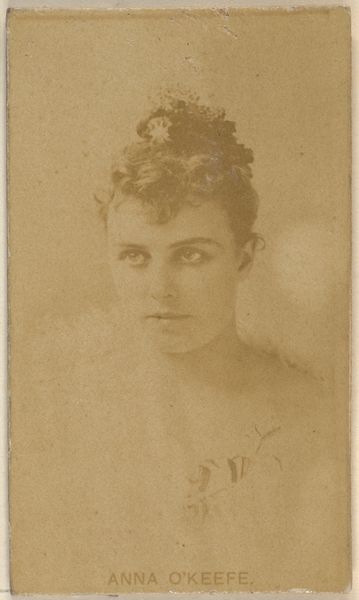
Mary Mills, from the Actresses series (N245) issued by Kinney Brothers to promote Sweet Caporal Cigarettes 1890
0:00
0:00
drawing, print, photography
#
portrait
#
drawing
# print
#
photography
Dimensions: Sheet: 2 1/2 × 1 7/16 in. (6.4 × 3.7 cm)
Copyright: Public Domain
Curator: This portrait of Mary Mills is part of the "Actresses" series (N245), produced around 1890 by the Kinney Brothers to promote their Sweet Caporal Cigarettes. It’s currently held at the Metropolitan Museum of Art in New York. It uses a combination of drawing, print and photography. Editor: Well, right away, the soft sepia tone gives it such a dreamy, old-Hollywood feel. And there's a stillness in her expression…a kind of gentle melancholy, isn’t it? Makes you wonder what she's thinking, dreaming about. Curator: It certainly encapsulates the Victorian era's romanticism, and considering the context, it's important to understand this portrait not just as art, but as a marketing tool, a constructed image of femininity tied to consumerism. What did it mean for women like Mary Mills to be presented in this way, and what roles were they allowed to occupy? Editor: Hmm, “marketing tool.” It does kind of reduce her, doesn’t it? Still, I wonder if there was a different agency for performers then; was it empowering? I bet being on those cigarette cards felt pretty daring—and, for better or worse, probably made people want to smoke 'em. A complex cultural snapshot, if you ask me. Curator: Precisely. And we can look at the photographic conventions, how this reinforces societal expectations but maybe simultaneously hints at possibilities for fame and recognition beyond prescribed gender roles. How the gaze and pose convey certain messages... Editor: Right, so it's beautiful… but, like, beautiful and politically loaded, which makes it so much richer, right? I keep imagining Mary hopping off the card to become an avenging, progressive crusader of some sort, battling societal wrongs of the Victorian era. Is that too much? Curator: That creative projection helps bridge the gap between then and now. When you apply critical perspectives relating to identity and representation we start seeing art’s relation to systems of power and how they shaped perceptions then and now. Editor: Absolutely. Now I have to go ponder it more, I am thinking of painting her in technicolor, just saying… Curator: Food for thought for me too, it definitely pushes to question the frameworks through which we see, value, and remember people through art and marketing.
Comments
No comments
Be the first to comment and join the conversation on the ultimate creative platform.
